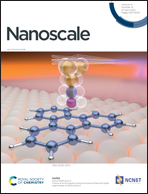Impact of the segment ratio on a donor–acceptor all-conjugated block copolymer in single-component organic solar cells†
Abstract
The development of single-component organic solar cells (SCOSCs) using only one photoactive component with a chemically bonded D/A structure has attracted increasing research attention in recent years. At represent, most relevant studies focus on comparing the performance difference between a donor–acceptor (D–A) conjugated block copolymer (CBC) and the commensurate blending systems based on the same donor and acceptor segments, and still there are no reports on the impact of the segment ratio for a certain D–A CBC on the resultant photovoltaic performance. In this study, we synthesized a D–A all-conjugated polymers based on an n-type PNDI2T block and a p-type PBDB-T donor block but with three different segment ratios (P1–P3) and demonstrate the significance of the D/A segment ratio on photovoltaic performance. Our results reveal that the n-type PNDI2T block plays a more critical role in the inter/intra-chain charge transfer. P1 with a higher content of PNDI2T delivers superior exciton dissociation and charge transfer behavior than P2 and P3, benefitting from its more balanced hole/electron mobility. In addition, a higher packing regularity associated with a more dominant face-on orientation is also observed for P1. As a result, SCOSC based on P1 exhibits the highest PCE among the synthesized CBCs. It also possesses a minimal energy loss due to the better suppressed non-radiative recombination loss. This work provides the first discussion of the impact of the segment ratio for a D–A all-conjugated block copolymer and signifies the critical role of the n-type segment in designing high-performance single-component CBCs.



 Please wait while we load your content...
Please wait while we load your content...